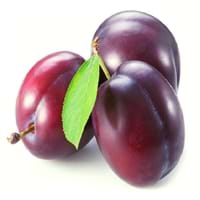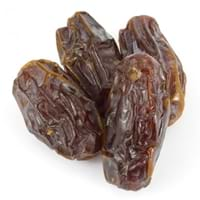Health Benefits
Cancer prevention, Cures gastro-intestinal troubles, Heart care, Increase in haemoglobin, Prevents diabetes
Cancer prevention, Cures gastro-intestinal troubles, Diarrhea treatment, Heart care, Heat stroke treatment, Improves muscular strength, Prevents constipation, Prevents nerve damage, Strengthening of bones
General Benefits
Anti-inflammatory properties, Boosts immune system, Digestive aid, Eye care, Flu treatment, Helps in weight loss, Maintains healthy cholesterol level, Treatment of common cold
Boosts immune system, Maintains healthy cholesterol level, Strengthens bones
Skin Benefits
Anti-aging benefits, Brightens and lightens complexion, Reduces wrinkles, Skin revitalization, Treatment of dark spots
Anti-aging benefits, Brightens and lightens complexion, Reduces wrinkles, Treatment of skin diseases
Hair Benefits
Prevents hair loss, Promotes longer and healthier hair, Protects hair, Remedy for split ends, Treatment of dandruff
Prevents hair loss, Promotes longer and healthier hair, Protects hair, Regulates hair growth
Allergy Symptoms
Abdominal pains, Anaphylaxis, Vomiting
Redness of eyes, Runny nose, Sneezing, Watery eyes
Side Effects
Allergic reaction
Allergic reaction, Diarrhoea, Intestinal gas, Stomach pain, Tooth decay, Weight gain
Best Time to Eat
As a snack in the late afternoon, Eat the fresh ones, avoid mixing with any other foods, don't eat after meal., Morning time (before lunch)
Any time except an hour after meal, Don't consume at night and before bed
Vitamin B5 (Pantothenic Acid)
Vitamin C (Ascorbic Acid)
Vitamin K (Phyllochinone)
Phytosterol
Not Available
Calories in Fresh Fruit with Peel
Calories in Fresh Fruit without Peel
Not Available
Not Available
Calories in Frozen Form
Not Available
Calories in Canned Form
Not Available
Season
Summer
Spring, Summer
Varieties
Victoria, President, Czar, Ariel, Avalon and Oullins Gage
Barhi, Dayri, Deglet Noor, Halawy, Khadrawy, Medjool, Thoory and Zahidi
Color
Pink, Purple, Red
Black, Brown, Red, Yellow
Inside Color
Yellow
Brown
Taste
Juicy, Sweet, Tart
Sweet
Soil Type
Clay, Loam, Sandy loam
Clay, Loam, Sand
Climatic Conditions
Cold
Hot, Warm
Facts about
- In china, plums are used for production of wine.
- A chemical called amygdalin found in plum seeds, turns into toxic compound in human body.
- Plum tree produces fruit 3-5 yrs after planting.
- Date is known as the tree of life in Middle east.
- Date palms cover 3% of the earth's total farmlands.
- Scholars believe that date (and not apple) was the real fruit mentioned in the Bible's Garden of Eden.
Spirits
Yes
Not Available
Cocktails
Yes
Not Available
Other Countries
Bosnia, Chile, India, Iran, Italy, Romania, Serbia, Turkey, United States of America
Algeria, Iraq, Oman, Pakistan, South Africa, United Arab Emirates
Top Importer
United Kingdom
India
Top Exporter
Chile
United Arab Emirates
Botanical Name
Prunus domestica
Phoenix Dactylifera
Synonym
Not Available
Not Available
Subkingdom
Tracheobionta
Tracheobionta
Division
Magnoliophyta
Magnoliophyta
Class
Magnoliopsida
Liliopsida
Subclass
Rosidae
Arecidae
Family
Rosaceae
Arecaceae
Species
P. domestica
P. dactylifera
Difference Between Plum and Date
We might think that Plum and Date are similar with respect to nutritional value and health benefits. But the nutrient content of both fruits is different. Plum and Date Facts such as their taste, shape, color, and size are also distinct. The difference between Plum and Date is explained here.
The amount of calories in 100 gm of fresh Plum and Date with peel is 46.00 kcal and 282.00 kcal and the amount of calories without peel is Not Available and Not Available respectively. Thus, Plum and Date belong to Low Calorie Fruits and High Calorie Fruits category.These fruits might or might not differ with respect to their scientific classification. The order of Plum and Date is Rosales and Arecales respectively. Plum belongs to Rosaceae family and Date belongs to Arecaceae family. Plum belongs to Prunus genus of P. domestica species and Date belongs to Phoenix genus of P. dactylifera species. Beings plants, both fruits belong to Plantae Kingdom.









